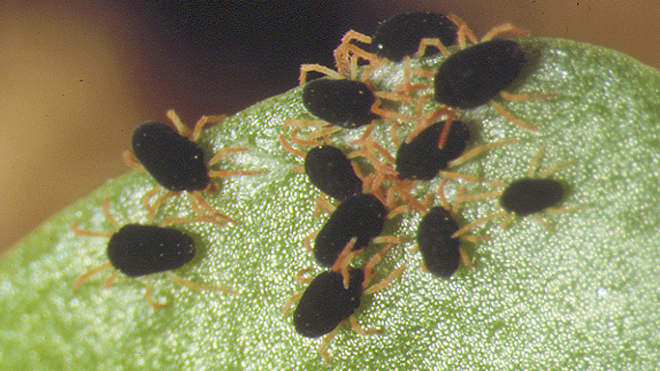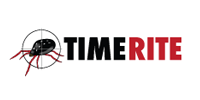The time is right to check your TIMERITE® spray date

With spring around the corner, now is the time for woolgrowers to find out their optimum spray date for the control of redlegged earth mites in their pastures. The TIMERITE® tool has recently been updated to reflect new data and improved modelling, so it’s important for all woolgrowers to check they have the best spray date for their farm.
FAST FACTS
- The TIMERITE® tool has recently been updated, so woolgrowers should check they have the Best spray date for their locality.
- The new TIMERITE® tool also now provides an Ideal spray window during which spraying results will be at least 95% as good as the Best spray date, thereby providing woolgrowers with more flexibility.
- The new tool is a lot easier to use because growers now only need to input the postcode of their property.
Redlegged earth mites (RLEM) can be a major pasture pest for woolgrowers in the winter rainfall regions of southern Australia. RLEM are small (1 mm long) with black bodies and red legs, spending most of their time on the soil surface, moving up onto plants to feed. The mites compete with sheep for pasture feed, which leads to production losses.
Strategic spraying of pastures in late winter-spring can help minimise RLEM damage to pastures the following autumn. However, the best date to spray depends on where in Australia the farm is located.
The optimum date for your farm can be obtained through the TIMERITE® tool at www.timerite.com.au.
“The TIMERITE® tool was first launched more than 20 years ago but has recently been upgraded, not only in light of new and improved modelling, but also to offer greater functionality and a simpler experience for growers,” said AWI National Extension Manager, Emily King.
“Woolgrowers should use the new TIMERITE® to check they have the ‘Best spray date’ for their farm, as these dates have shifted with new data and improved modelling. In addition to the Best spray date, the tool also now provides a date range – the Ideal spray window – for which control of RLEM is still very high. This provides growers with improved flexibility to plan a spray window, then spray when the weather is suitable.
“The new TIMERITE® tool is also easier to use. Instead of the grower inputting their farm’s coordinates, they now only need to enter their postcode. Additionally, growers now have the ability to visualise the impact on mite control if spraying outside the Ideal spray window.”
TIMERITE® is effective against RLEM, but not against other pasture pests (including blue oat mites and others which look similar), so it’s important you know which pest you’re dealing with on your property.
TIMERITE® works by accurately predicting the timing of diapause (oversummering) egg production and implementing control measures before this critical stage in the RLEM life cycle. By controlling RLEM populations prior to diapause egg production, the number of mites that hatch that following autumn is drastically reduced.
However, you should only spray when needed. Overuse of chemical spraying leads to pesticide resistance, which is becoming more widespread in RLEM. The first step in managing RLEM is to reduce risk within a paddock using the following strategies:
- Avoid sowing highly susceptible pasture species or crops into paddocks known to have high mite numbers.
- Incorporate a cereal crop into your rotation to reduce mite numbers.
- Control weeds, especially broadleaf weeds, within paddocks and along fence lines.
- Heavily graze pastures in spring.
- Burn stubbles to reduce mite numbers the following autumn.
TIMERITE® should be used when the risk of RLEM in the following season is high. This includes situations such as:
- High numbers of RLEM or significant feeding damage across the paddock in late winter-spring.
- Plans to sow a susceptible pasture species or crop (e.g. canola, medic or clover).
The TIMERITE® prediction for your farm is based on you using a long residual pesticide for control (e.g. omethoate). Other pesticides with shorter residual activity may have reduced efficacy.
TIMERITE® was originally developed and funded by AWI and CSIRO. Updates and improvements were made by Cesar Australia in collaboration with CSIRO, AWI, GRDC and MLA.
More information: www.timerite.com.au

This article appeared in the Winter 2025 edition of AWI’s Beyond the Bale magazine that was published in June 2025. Reproduction of the article is encouraged.












